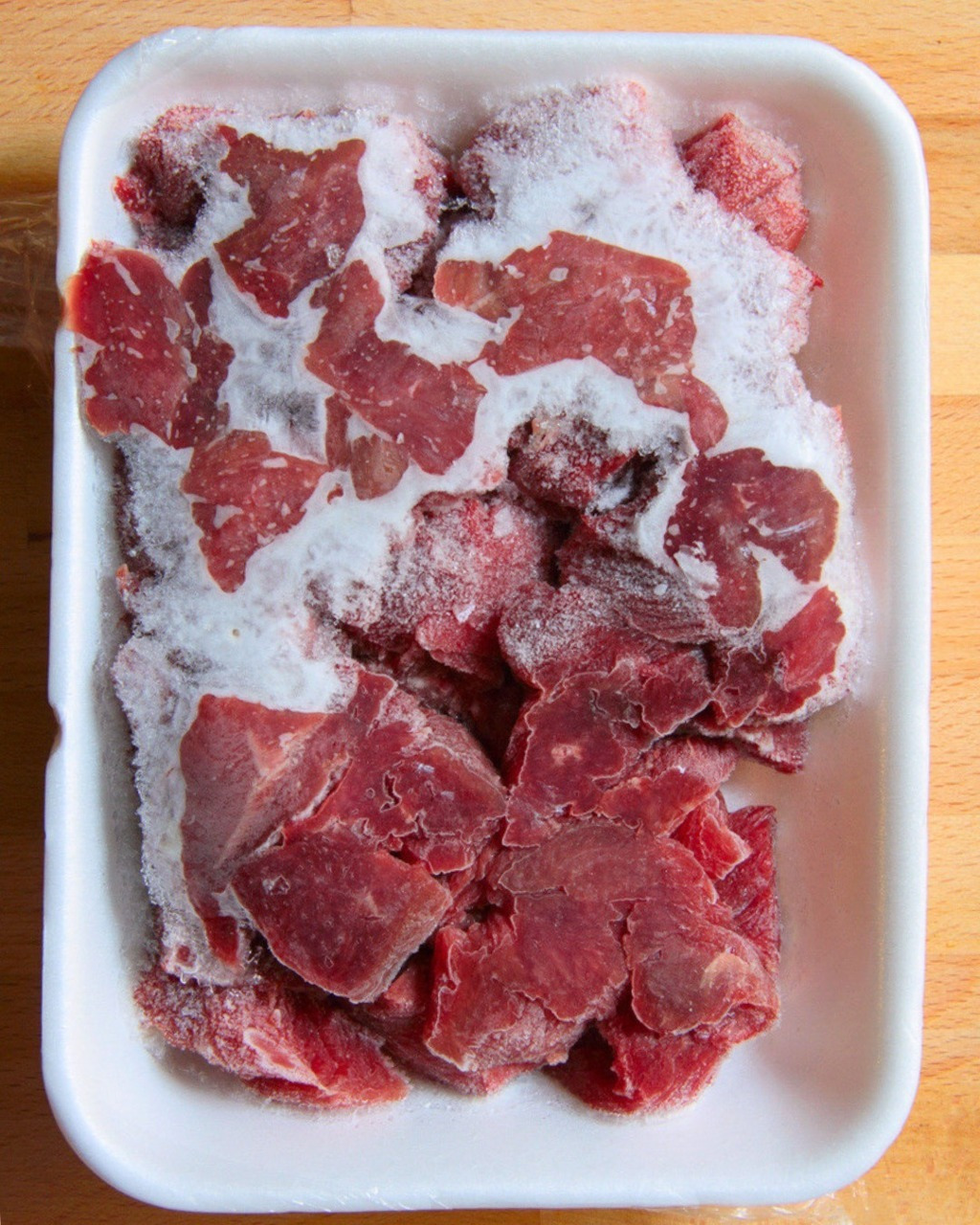ADVERTISEMENT
How to Do It:
- Seal Meat in a Leak-Proof Bag: To avoid contamination, place the meat in a leak-proof plastic bag. This ensures that water doesn’t come into direct contact with the meat, which can affect its texture and taste.
- Submerge in Cold Water: Fill a large bowl or sink with cold water (never hot water, as it can promote bacterial growth). Submerge the sealed meat in the water.
- Change Water Every 30 Minutes: To ensure that the water stays cold enough to prevent bacterial growth, change the water every 30 minutes. Smaller cuts of meat can defrost in 1-2 hours, while larger pieces may take up to 4-6 hours.
- Cook Immediately: Once thawed, cook the meat immediately. Never refreeze meat thawed using this method, as it has been in the “danger zone” (between 40°F and 140°F) for too long.
Why It Works:
- This method is much quicker than refrigerator thawing, allowing you to defrost meat in a few hours instead of a day or more.
- As long as the meat is kept in a sealed bag and the water is changed regularly, it stays at a safe temperature.
3. Microwave Thawing (Quickest Method)
If you’re in a hurry and need to thaw meat quickly, microwave thawing is your best option. Most modern microwaves have a defrost setting designed specifically for this purpose.
How to Do It:
- Place Meat on a Microwave-Safe Plate: Remove the meat from any packaging and place it on a microwave-safe plate to catch any juices that may leak out.
- Use the Defrost Setting: Set your microwave to the defrost setting based on the weight of the meat. Most microwaves will prompt you for the weight, or you can manually enter the weight of the meat to ensure accurate defrosting.
- Check Regularly: Stop the microwave every few minutes to check on the progress and flip or rotate the meat for even thawing. Be careful not to start cooking the edges of the meat, as the microwave can sometimes begin cooking the outer layers while the inside remains frozen.
- Cook Immediately: Once thawed, cook the meat immediately to prevent any bacteria from growing due to uneven thawing.
Why It Works:
- This is the fastest method and works well when you need to defrost meat right before cooking.
- It’s best for small cuts of meat or individual portions, such as chicken breasts, ground meat, or steaks.
4. Cooking from Frozen (No Thawing Needed)
In many cases, you can cook meat directly from frozen without the need for thawing. This method works best with smaller cuts of meat, such as chicken breasts or ground meat, and may require a slightly longer cooking time.
How to Do It:
- Skip the Thawing Process: Take the meat directly from the freezer and start cooking it. Be aware that the cooking time may increase by about 50%, depending on the size and type of meat.
- Adjust Cooking Times: When cooking from frozen, monitor the temperature closely. Use a meat thermometer to ensure the meat reaches a safe internal temperature, such as 165°F (74°C) for poultry and 145°F (63°C) for steaks, pork, and lamb.
Why It Works:
- Cooking from frozen is a great option when you forget to thaw your meat in advance or need a last-minute meal.
- It eliminates the need for defrosting altogether and can save you time when preparing meals.
Methods to Avoid:
- Room Temperature Thawing: Do not thaw meat on the counter at room temperature. Bacteria can rapidly multiply on the surface of the meat while the inside remains frozen. This method can lead to foodborne illnesses.
- Hot Water Thawing: Thawing meat in hot water is not recommended because it encourages bacterial growth. Meat should never be thawed at temperatures above 40°F.
Conclusion:
Defrosting meat safely is essential for both health and quality. The refrigerator method is the best for preserving flavor and texture while ensuring safety, but if you’re in a hurry, the cold water and microwave methods provide faster options. Always avoid defrosting at room temperature or with hot water, as these practices can lead to foodborne illness.
By following these correct methods for defrosting meat, you’ll not only enjoy delicious, tender dishes but also keep your family safe. Proper thawing ensures that the flavors stay intact and the meat remains juicy and tender, making your cooking experience both enjoyable and safe!
ADVERTISEMENT
